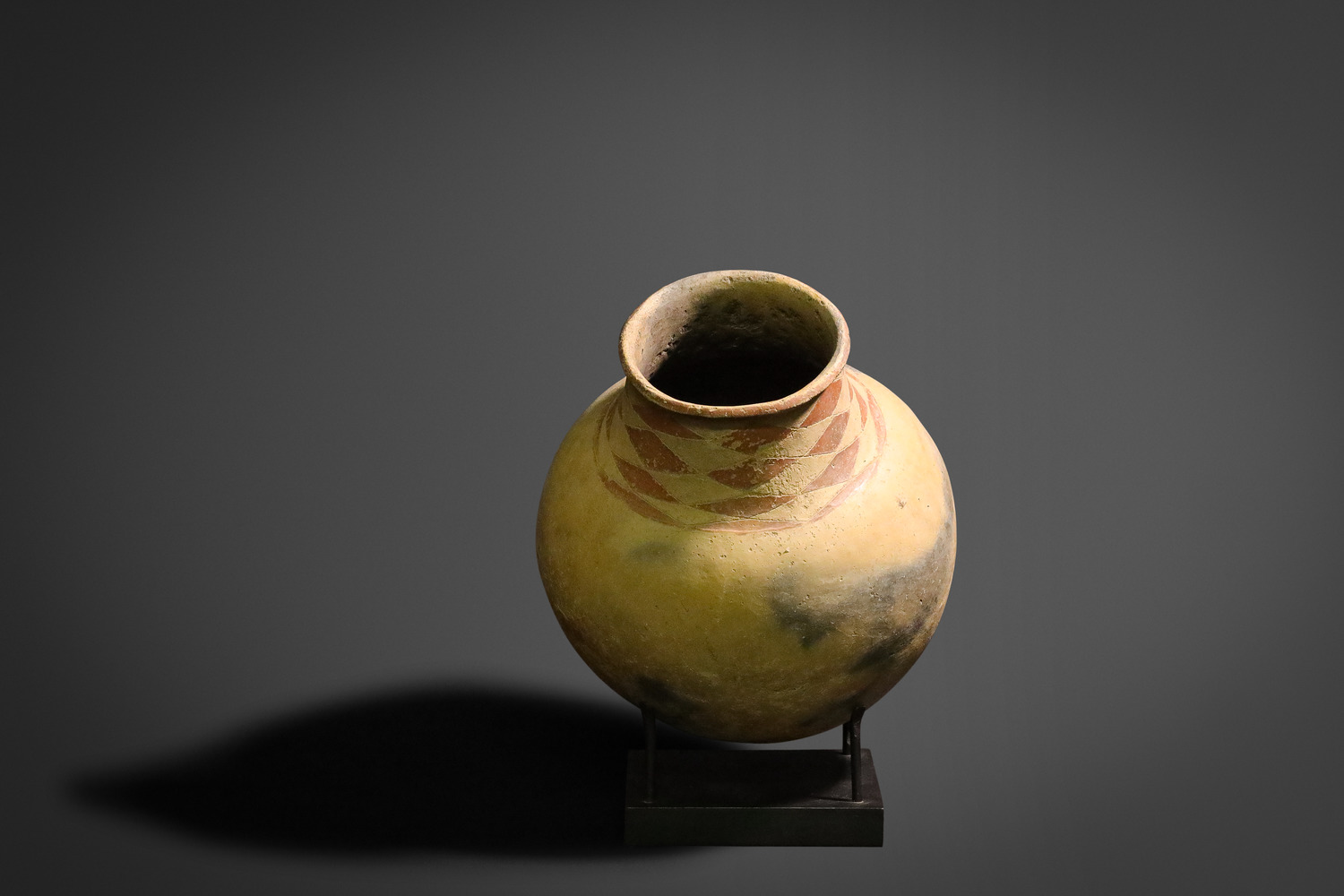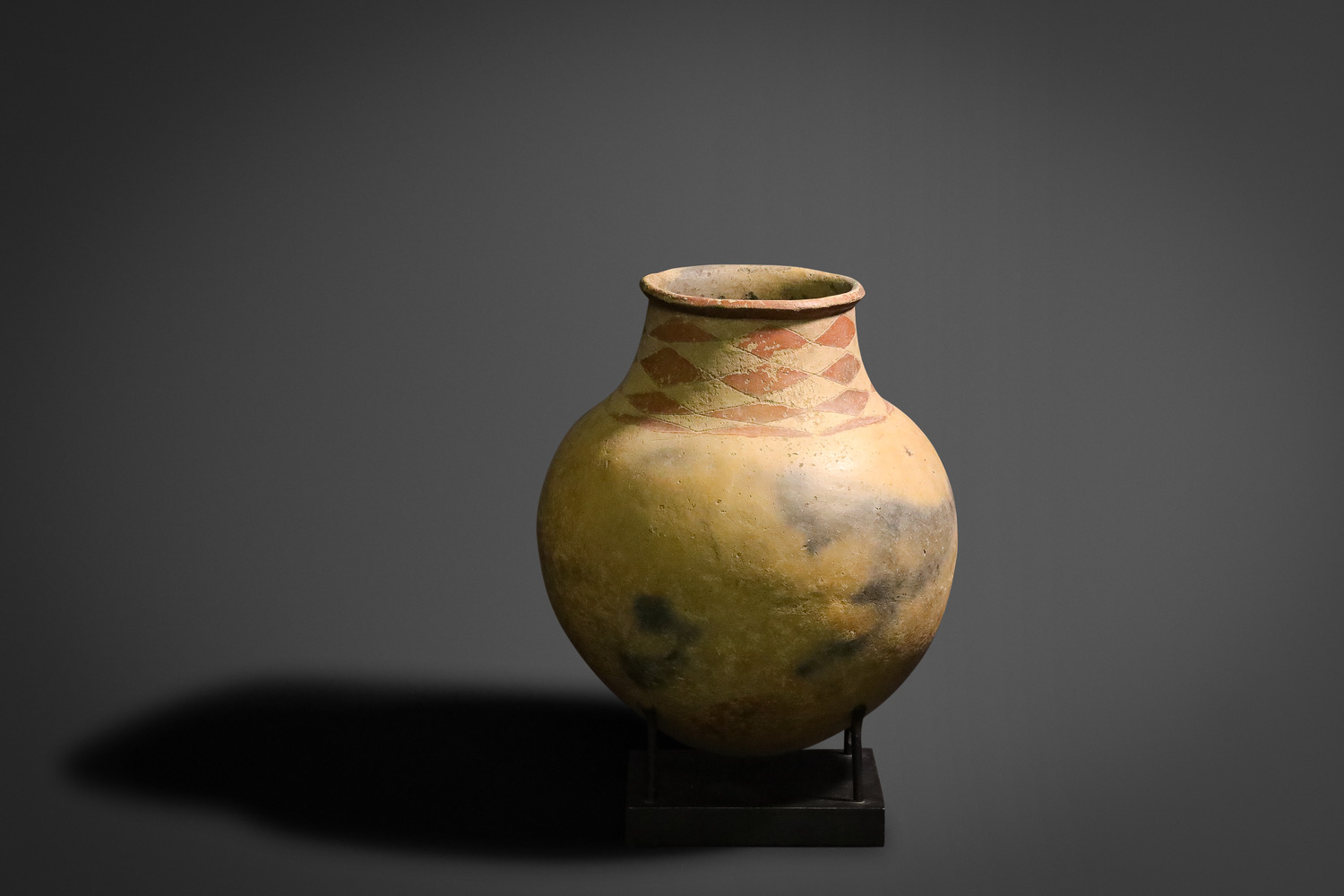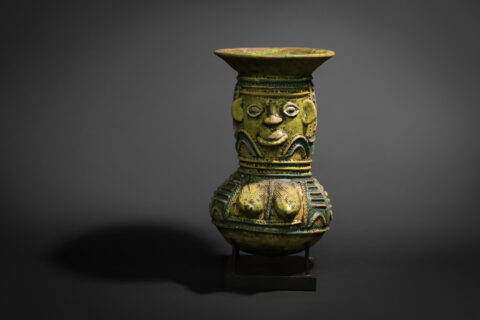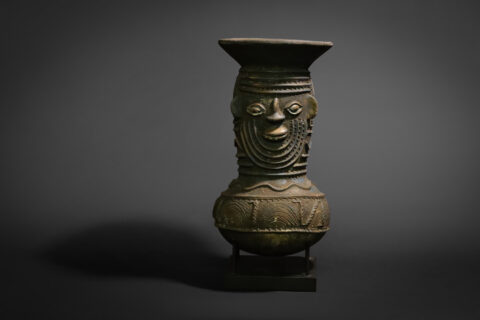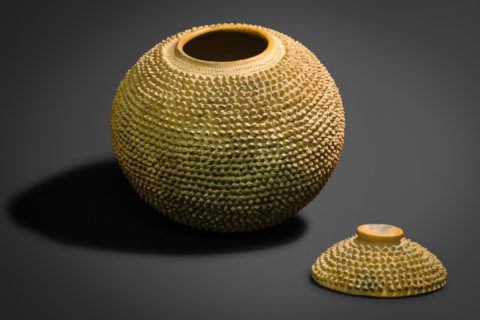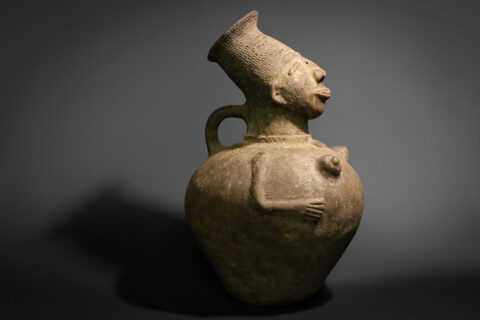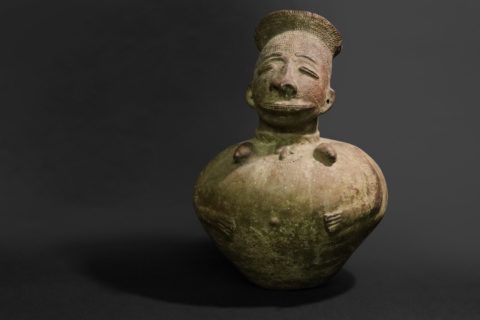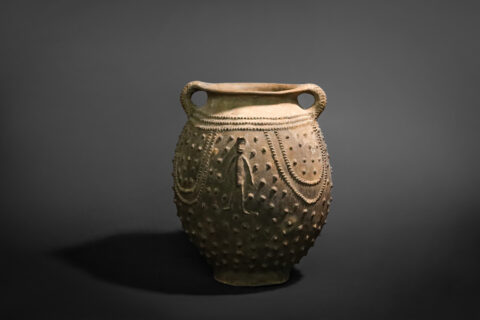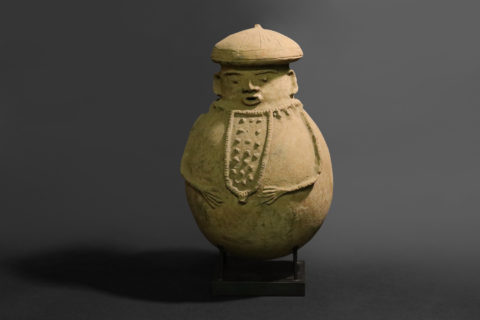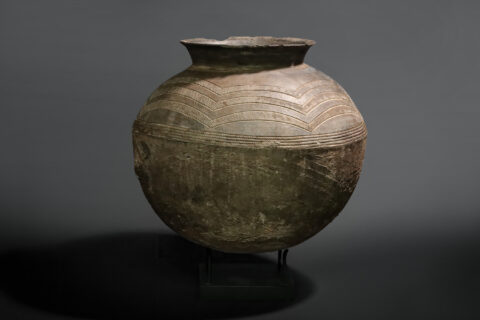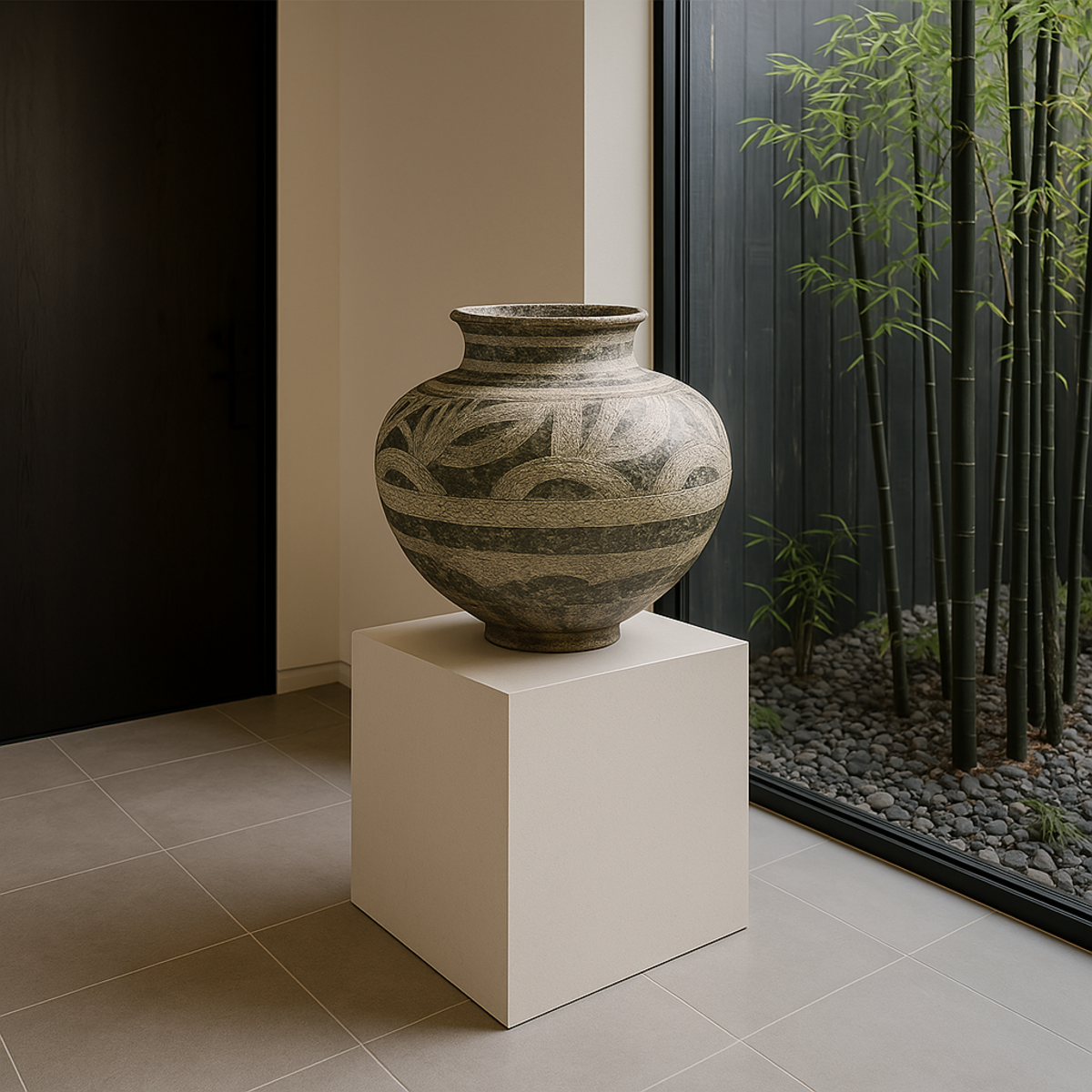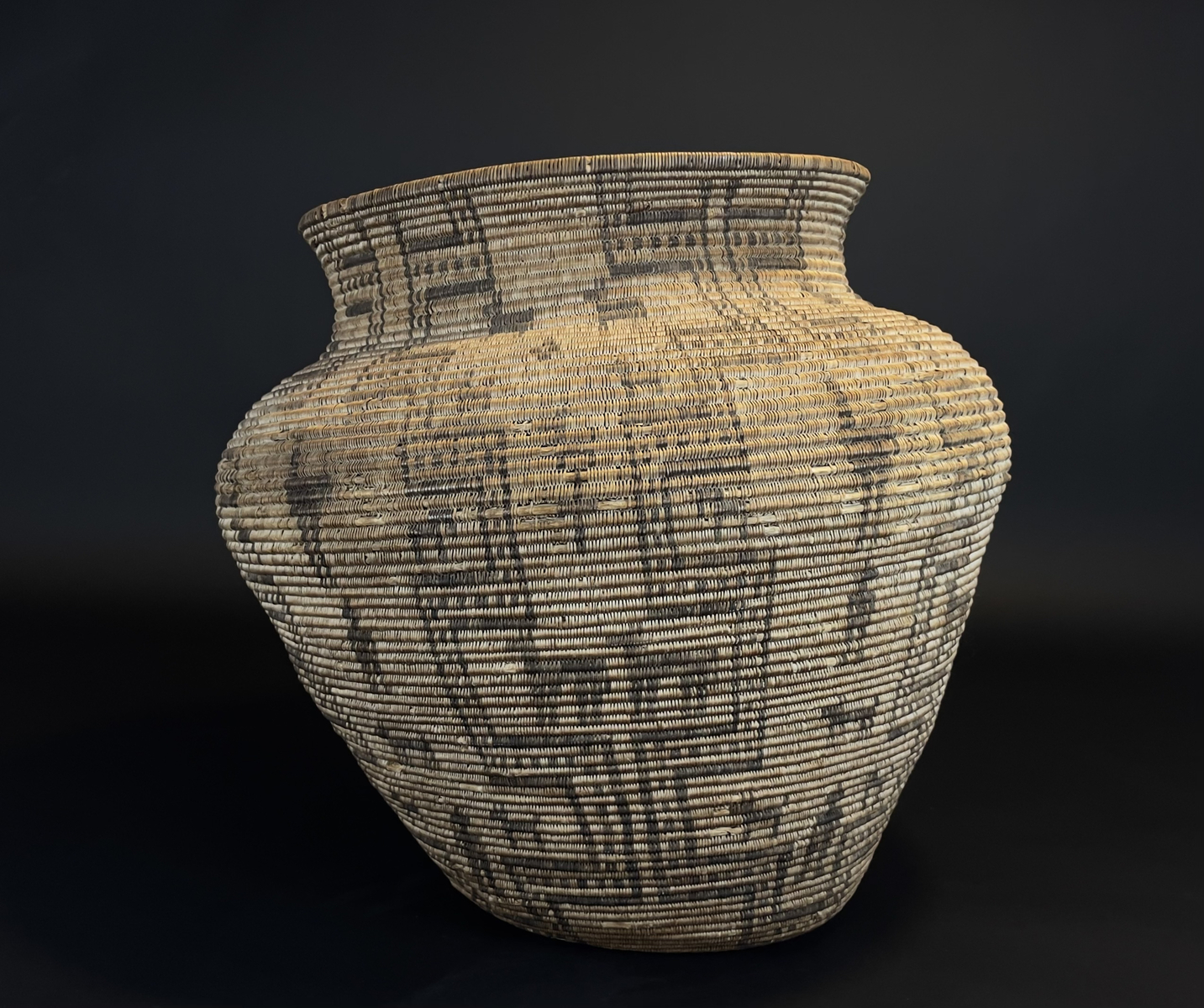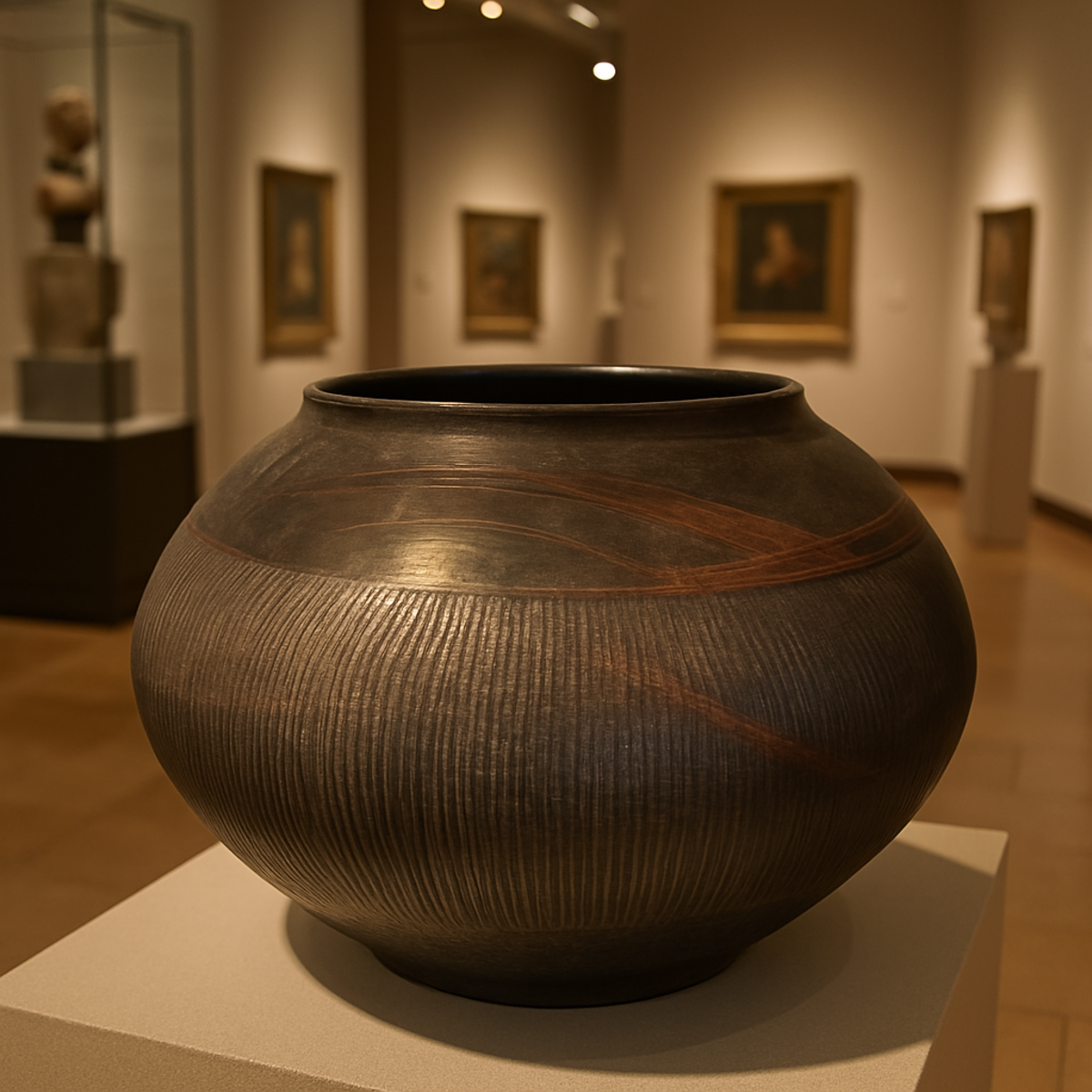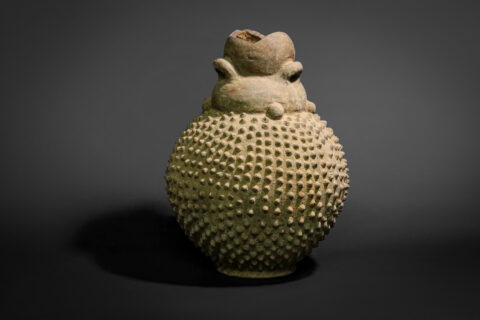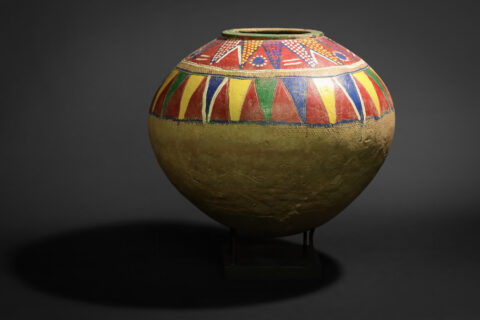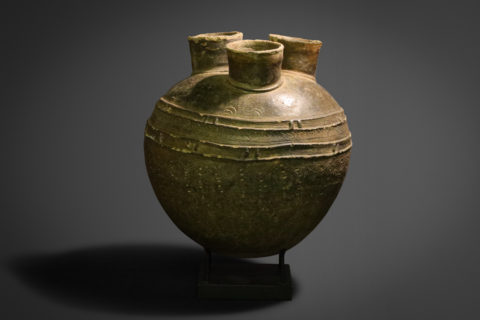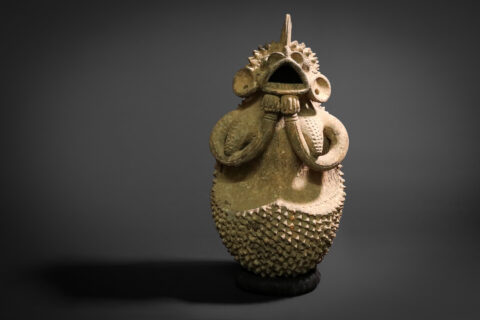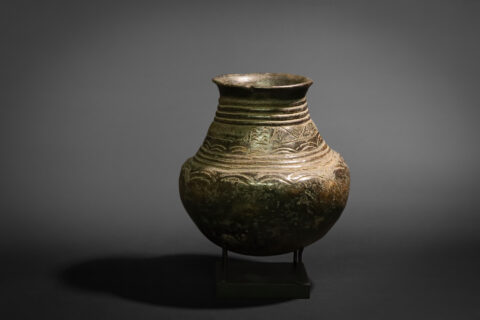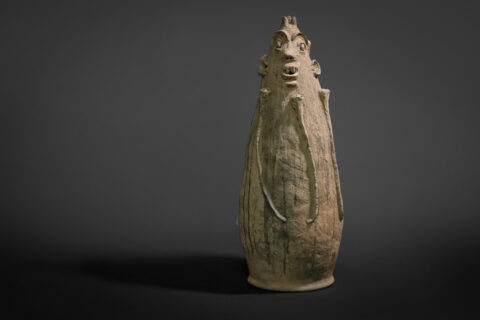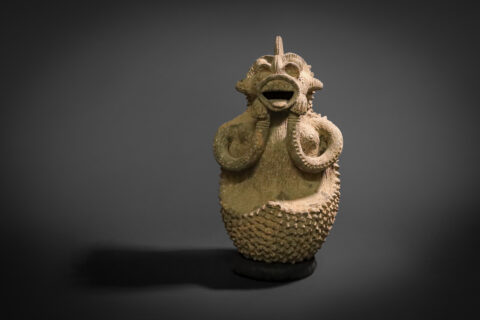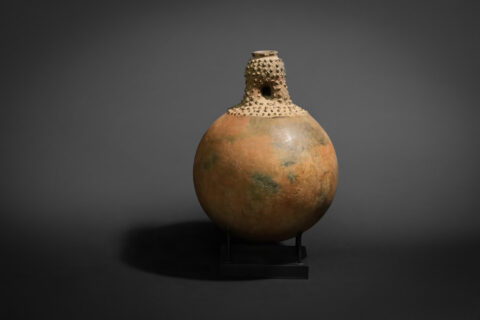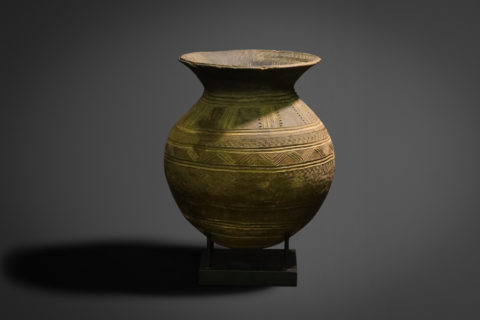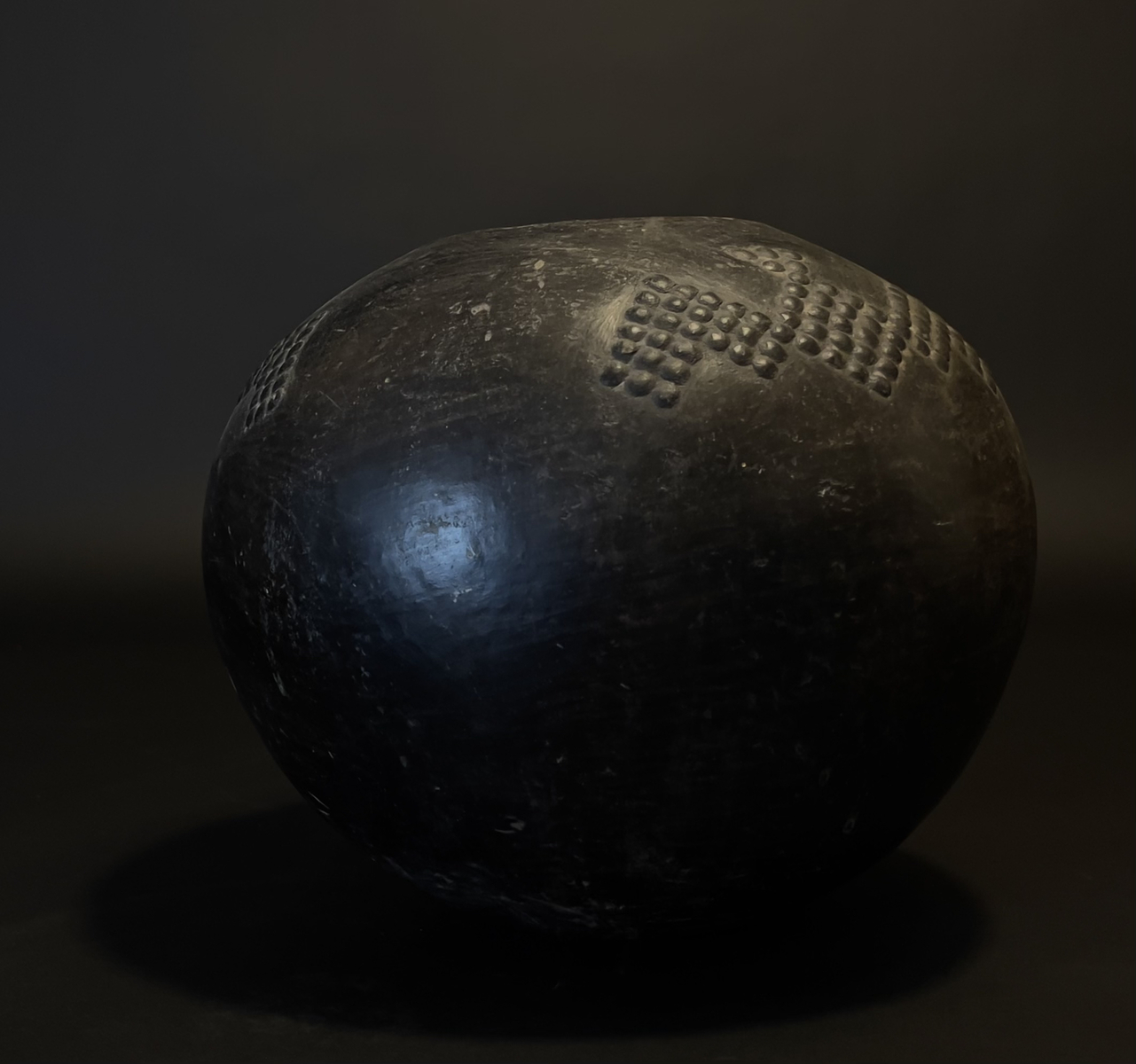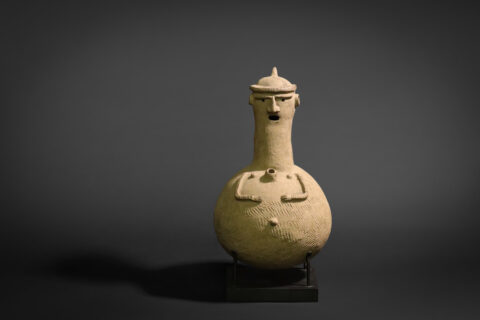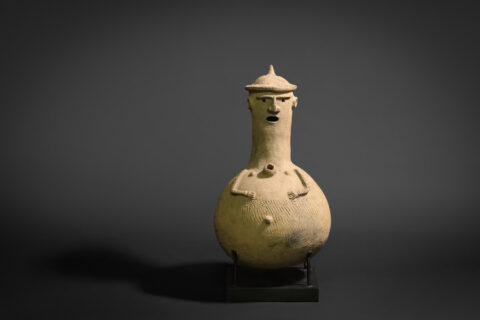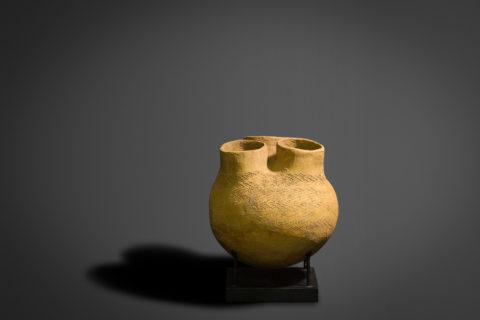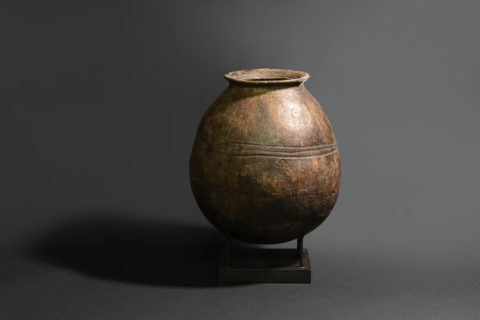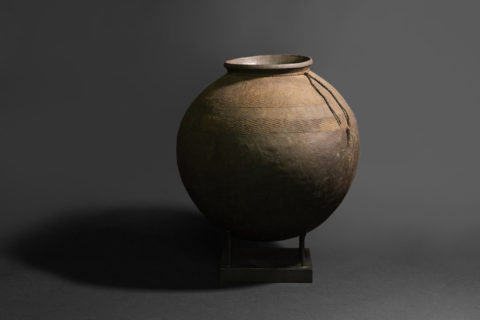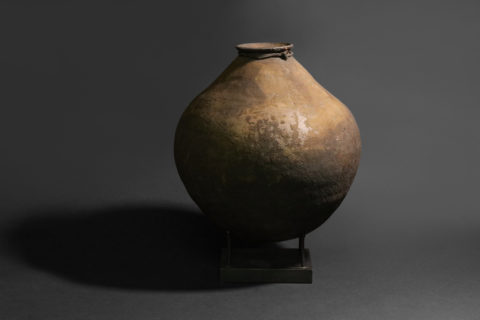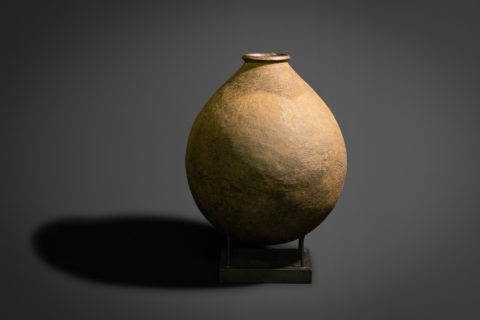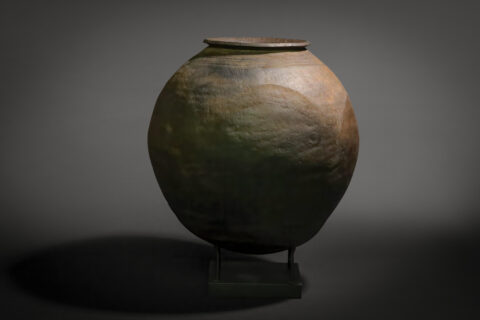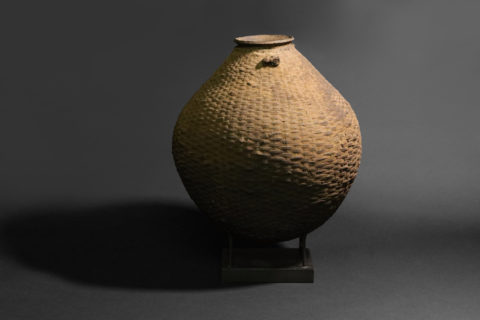Description
This eye-catching vessel is constructed of terra-cotta clay by the Tsonga People from Mozambique. It features a wide, beveled lip on top and textured body resembling a planetary surface. The top portion is marked by painted, angular patterns that function aesthetically and as a mechanism to aid one’s grip when drinking or pouring.
The Tsonga people are an ethnic group that primarily resides in southern Africa, including parts of Mozambique, South Africa, and Zimbabwe. Tsonga pottery is a form of traditional African pottery that has been produced by Tsonga potters for centuries.
In Mozambique, Tsonga pottery is primarily made in the village of Nhabawa, located in the southern part of the country. The village is known for its traditional pottery-making techniques, which have been passed down through generations of Tsonga potters.
Tsonga pottery is typically hand-built using coiling techniques. The potters use locally-sourced clay, which is mixed with water and then worked into a coil. The coil is then coiled around itself to form the base of the pot, and additional coils are added to create the walls. The pots are then smoothed and shaped using a variety of tools, such as wooden paddles and stones.
Tsonga pottery is often decorated with intricate geometric patterns and designs, which are carved or painted onto the surface of the pot. The patterns are typically created using a combination of black, white, and red pigments, which are derived from natural sources.
Tsonga pottery serves both functional and aesthetic purposes. The pots are often used for storing water and other liquids, as well as for cooking and serving food. In addition to their practical uses, Tsonga pots are also considered works of art, and are often sold to collectors and tourists.
Overall, Tsonga pottery represents an important aspect of Mozambique’s cultural heritage, and continues to be an important part of Tsonga identity and tradition.


